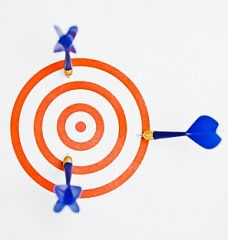In the new edition of Education Next, Mark Bauerlein takes a dim view of the nature of arts education advocacy and offers a prescription for improvement, namely a focus on arts as a discrete discipline and a more entrepreneurial approach overall.
Click on through to read Advocating for Arts in the Classroom.
While I admire Bauerlein’s passion, the piece had an out of touch quality to it with neat little boxes for advocates, teachers, the relationship between arts and parts of the school curriculum, and overall messaging. If only it were that simple.
The field of arts education should not be viewed solely through the lens of Arts Education Partnership meetings in 2003-2005. That being said, the people who attend AEP forums include education policy makers such as chief state school officers, district superintendents, school board members, and yes, “advocates” such as directors of education at museums and cultural organizations. But don’t be fooled by the neat little boxes, as many who attend AEP and other similar conferences have regular duties and expertise in providing professional development for those who deliver instruction in the classroom, including school teachers and teaching artists.
Many of these advocates, who wear multiple hats, have been writing exemplary arts curricula that animates and extends the very standards that Bauerlein lauds. And, many of these individuals have been working hard to bring back certified arts teachers in the big cities that saw their teachers disappear bit-by-bit over a 30 year period. These very same people are on the front lines, partnering with school communities to create, grow, and sustain the arts. And, contrary to the picture painted by Bauerlein, some of these people and their organizations lead workshops on budgeting, scheduling, assessment, funding, and more, for their colleagues in the schools, including principals, teachers, and parents.
It’s a big field with a lot going on.
The best part of Bauerlein’s piece centers in his belief that advocacy for the arts must be based fundamentally on the arts as a discrete discipline.
If arts advocates instead emphasize the material–Shakespeare, major and
minor chords, etc.–other teachers might show respect for their position,
even if only to avoid appearing anti-art or anti-intellectual.
And he points out that such a value is at odds with “arts ed advocates.”
How to impart the importance of artistic tradition without estranging arts ed advocates?
I cannot argue with the difficulties the field writ large has had in making its case. And, the case tends to be made by hitching a wagon to anything that seems promising, whether it be 21s century skills, creativity, the imagination, the “Mozart effect,” and much more. Included in this roulette wheel approach is and has always been that of art for art’s sake. There are few today who do not embrace this on a basic level, even if it is communicated along with other rationale.
It’s not for nothing that the field is in a continuous search for the right message: the variety of messages have not turned the tide in the big city school districts that fail to provide a quality arts education K-12. And as for placing the blame solely on what might sometimes appear to be a roulette wheel approach to validation, well, that’s wishful thinking. Just ask those in all of the other (non-arts) subject areas what has happened to their place in the school day, save ELA and math. You will find that no matter what the message, the curriculum has narrowed over the past decade or longer, predominately in the big city school districts. And let’s not think that the “other teachers” are the making these policy decisions, for that would simply be incorrect.
 Nevertheless, there’s lots to chew on here.
Nevertheless, there’s lots to chew on here.



